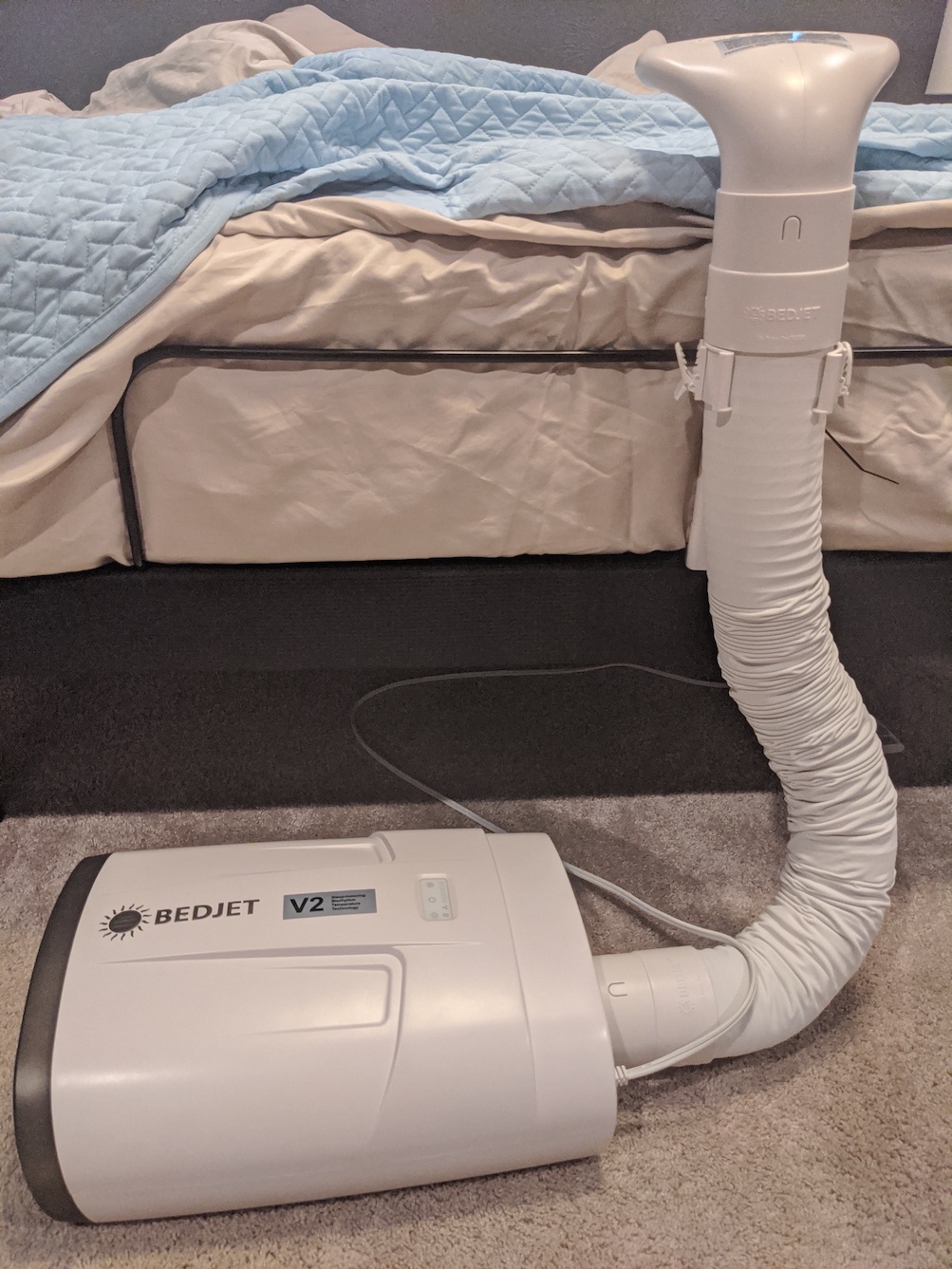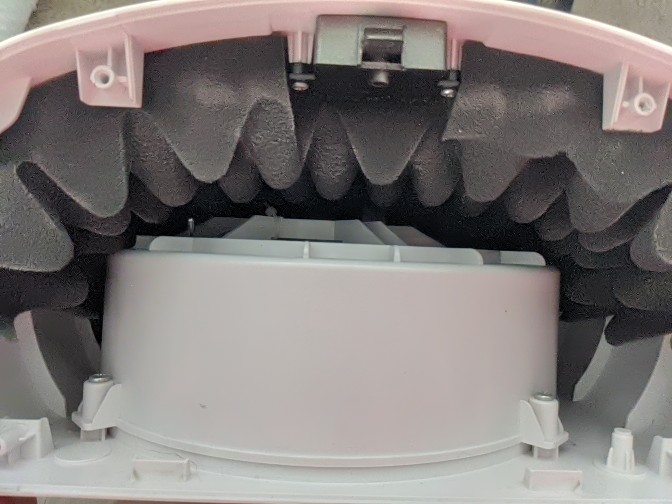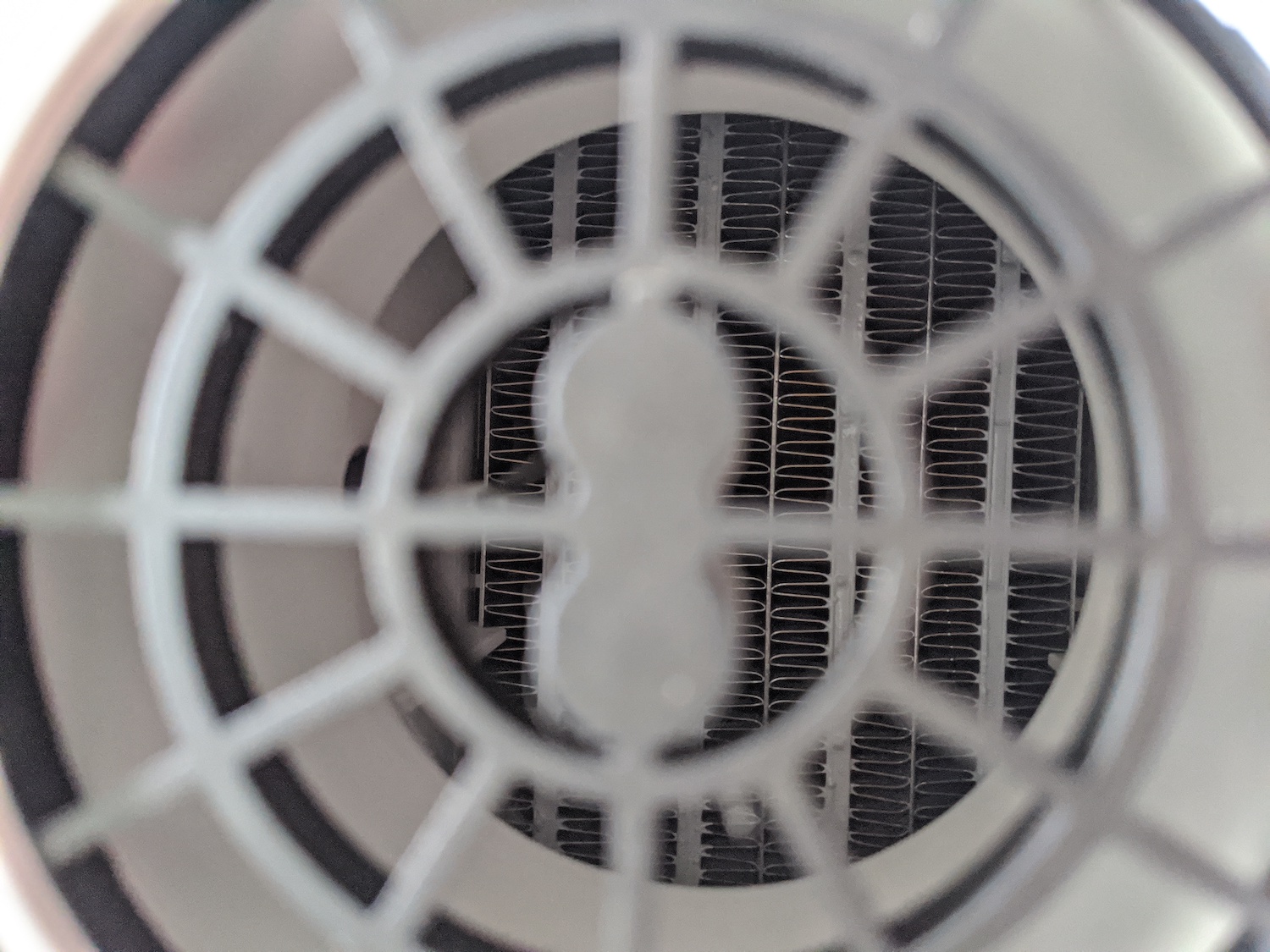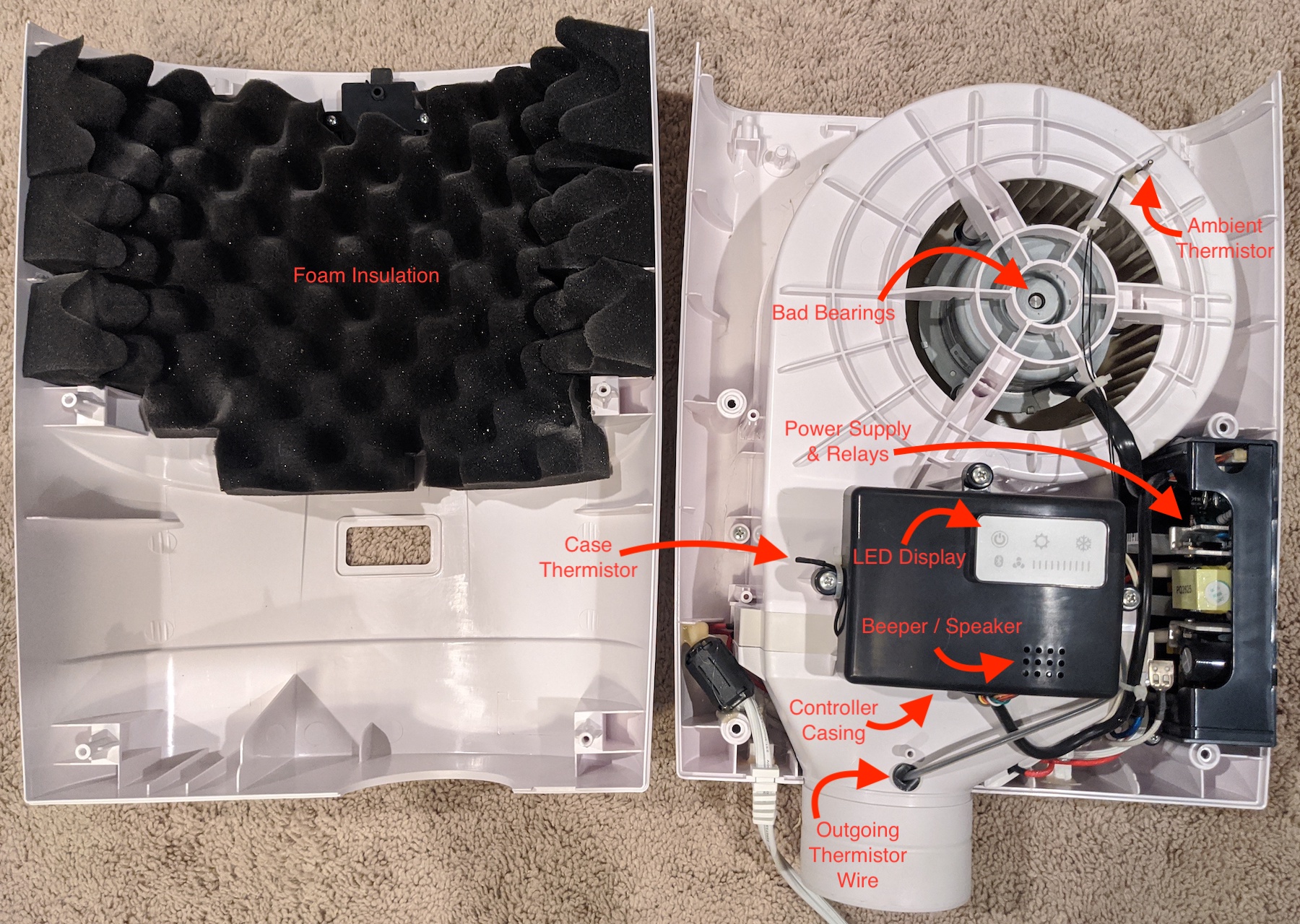Since February 2016, I’ve been sleeping with BedJet V2. I crowd-funded it way back in the day and it’s been an incredible device that has lasted long beyond its warranty. I have recommended it to many friends and clients who tell me they have difficulty sleeping. This week, the bearings in the BedJet’s motor started making some noise and I realized it was time to think about my old friend again.
BedJet is a device designed to ventilate the bed with room-temperature or heated air. Externally, it is about the size of a backpack, and features an extendable hose and diverter attachment. A long, plastic piece wedges itself between the bed or box springs and the mattress and grasps the hose to keep it stabilized so it doesn’t fall to the floor. Yes, it’s a lot of plastic.
Over these last 4 years, I have not had any pieces break off. I have had to replace the small battery in the remote 3 times, I think. If that battery starts to die, the BedJet may fail to respond, even through the smart phone application, which we must discuss.


As we remove the air filter assemby, we can see a substantial chunk of foam curved to the shape of the case (left or above), opposite a centrifugal fan. removing the hose, we can see a thermistor mount designed to monitor outgoing or exhausted air temperature (right or below).

Once we unscrew the BedJet, we can split it in halves to get a better view of the internal components.

As you can see, we have labeled the basic components to give a better idea of what everything is. We found three thermistors to measure the temperature at various locations inside the casing: the Ambient Thermistor monitors the temperature of ambient air in the room before it enters the fan, the Outgoing Thermistor monitors air after it passes through the heating element, and the Case Thermistor monitors air immediately outside of the enclosure for the heating element in an area where air probably wouldn’t circulate much.
We’ll talk about the new BedJet soon.
